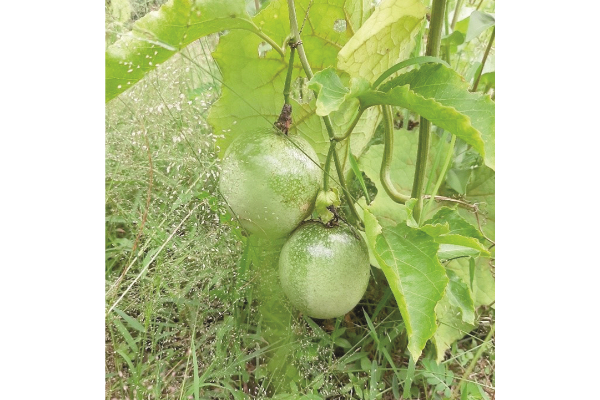


While it is true that most people would regard good health as the largest singular concern among a host of other important needs and wants, there are certainly a small number who would not be bothered so long as they have their daily tipples, sniffs or pricks. This is the reality of the real world situation where nothing is ideal or perfect.
Good health is all-encompassing and confers mental, physical, spiritual, emotional and social well-being to an individual whereas herd health covers more than a single individual.
Human beings come into this world on a fairly good health track, and the rest is up to him to keep the track in good condition in the months, years and decades that lie in front of him.
The saying that life is an unending journey of trials and tribulations rings true although it is also lined with unending possibilities including pitfalls and goldmines.
The essence is to leverage on the positive possibilities so that the life path ahead is always about positives, including the most basic one, that is, health. Even to create and leave behind an intangible legacy requires good health, at least from the mental aspect.
This is partly the reason why everyone, like it or not, is keeping at least two jobs, the first of which is to slog for a regular income from business or through employment, and secondly, to slog further to keep himself fit and healthy enough so that he can continue to slog for the first.
Incredibly, this sounds like an unending journey indeed, with every cog turning the wheel in unending circles.
Plants can improve human health
It is well-known that plants and their components constitute a big portion of food intake consumed by humans. The survival of many animals too depend on their food supply from the plant world.
For example, seaweed and other aquatic plants feed millions of marine life forms, while on land, animals that humans take for granted also have their food supply from plants.
These work their way up the food chain until all and sundry have their end in the kuali and on the table. Incredibly, it has been well documented that many plants, as well as animals, have won the hearts of their owners to the extent that they have become buddies, and such bondings have contributed to the physical and mental health on both sides of the divide.
In many ways, the food chain that lands on one’s table is capable of affecting the health of the consumer. In the old days where food including plants and animals, were mostly from nature, things were fine as there was no such thing as pesticide residues, toxic contaminants or poisons.
Fortunately, in the ulu areas today, many food materials are still being sourced safely from nature’s biggest store house, that is, the jungle. As these are virtually totally organic, there is no worry about contaminations or toxicity. This is one of the reasons why kampung chickens, vegetables and geese are in demand in the city due to the health factor.
It is therefore not surprising to find city folks taking a break in their kampungs and then returning with loads of foodstuffs from nature as they are aware that they are what they eat, that is, a healthy food may lead to a healthy body.
Of course there are many other aspects that may contribute to improved health in physical, mental, social, emotional and spiritual terms. Many set-ups such as gyms, sleazy clubs, seedy joints, spas, etc, did roaring businesses in the years prior to the pandemic while tapping into the deep pockets of those who felt they needed to be healthier. While the going was good, it was a win-win-win situation for all especially for those aiming for a fitter or more shapely body and a well-invigorated mind.
Even without attending the clubs, joints or gyms, it is still possible to invigorate oneself within the comfort of your own home garden.
It may be a backyard or frontyard, or even the balcony or window ledges. Even if the entire compound is fully concreted, do not worry as it is still possible to carry out healthy gardening for a healthier lifestyle.
Active gardening involves a fully hands-on approach on the ground in all aspects within the garden. Tasks such as trimming, manuring, watering, shifting of pots and materials, removals, etc., all require some degree of being bodily active, such as walking, bending, waddling, ambling, squatting, lifting, carrying, sawing, chopping and cutting.
Other physical actions in the garden such as rolling over a swath of soft creepers, pushing or pulling a lawn mower, stamping to firm up the soil in a planter box, pile-driving to stabilise a patch of soil – all using only body power – may induce a lot of huffing and puffing as well as plenty of sweat.
These are visible evidence of active gardening at play on the body, and at the end of the day, it should induce a very deep and sound sleep, resulting in, hopefully, less or even zero visits to the doctor.
A pleasing and soothing environment is what everybody wants of their plants irrespective of whether they are grown indoors or outdoors. Well-maintained plants are always a joy to behold where people of finesse are able to discern even subtle beauties and characters.
These are much enjoyed with gusto in the same way that coffee connoisseurs enjoy their coffee, or alcoholic aficionados sip their tipple. Plants yield much enjoyment in other appreciable ways although they do not announce their arrival as cockerels do.
A short morning stroll viewing the lush green foliage or colourful dainty flowers is sure to add an oomph to start the day on a firm and happy footing. Certainly, a person who feels good at the start of the day is likely to feel healthy for the rest of the day, all other factors being equal.
Filtration of air is what many plants can do, especially with several popular indoor ornamentals. These have certain physiological features that enable them to filter out harmful or toxic gaseous matters including formaldehyde, toluene and benzene. These volatile, invisible organic compounds that may be carcinogenic and highly toxic, are released from everyday items such as adhesives, paints, upholstery, particle board, furniture, carpets, cleaning products, solvents, pesticides, smoking, treated wood products, and so on.
At the same time, the use of such wonderful indoor plants, apart from filtering the air, are also capable of releasing oxygen during the night. Just imagine a bedroom with several of these fantastic plants working in over-drive at night to, not only filter out toxic volatile compounds, but also release oxygen within the room.
Such a godsend works in mysterious ways by creating a healthier room atmosphere for the occupants to have a sound sleep and waking up the next morning feeling fresher and healthier and ready to take on the world.
Fresher and cleaner organic homegrowns especially the leafy and fruit vegetables as well as small fruit trees like avocado, soursop, guava, pineapples, papayas, apple mangoes, etc., are perfect to supply the needs of a family to ensure that living within city boundaries can also be healthy and energising.
That homegrowns are definitely cleaner and healthier cannot be doubted as no one at home would want to poison the stuffs that are going to be put on the table.
Anyone in the city who has ever grown anything would declare that they are all for organic cultivation that is free of pesticides and chemicals. But in truth, there are still many out there who are willing to enjoy the convenience of modern agricultural inputs such as granulated chemical fertilisers, insecticides, and so on, although on a very much reduced scale.
The main reason is that they are all endeavouring as much as possible to keep the produce clean and safe for consumption, with the eventual aim of going fully organic. Therefore there is truth in the saying that a healthy food means a healthy head and body.
Start getting healthy
In urban areas, it is easy to get healthy as there are many parks, gyms, gardens, health clinics, spas and massage parlours. But gardening in city or urban homes is certainly one of the best and healthiest options on the table. On the one hand, it free of grease, salt, sugar or other toxic stuffs that go into the body.
On the other hand, gardening does not result in hypertension, obesity, kidney or heart problems, which incidentally, are some of the most prevalent health conditions that afflict much of the world’s population. Those seeking to dig deeper should consult their professional medical doctor.
Just look around us today – there are more people on the obesity list that one can ever count. Add in the great numbers of cardiac, diabetic, high blood pressure and kidney malfunction problem people, and the picture can become very fuzzy and mindboggling. It is therefore strongly recommended that more city folks be involved in gardening for the sake of improving the community’s overall health in some small, invisible ways.
Remember, a small but beneficial improvement of a single folk’s health through active gardening is already a plus point.
Come on, get cracking, folks!

Sansevieria (above), Aloe vera (below) and Chlorophytum (3rd pic) are multipurpose plants that bring a lot of benefits, namely, they are decorative in nature as well as serving as air filtration and oxygen releasing plants. The jelly from Aloe vera fronds are also widely used to beautify facial and bodily skins.



A bayam vegetable plant that is badly ravaged by pests.

A patch of kangkung growing in the wild. Such kinds of vegetable are truly pesticide-free.

A plump caterpillar feasting on an adenium plant is going to finish his job soon.

Pests will steer clear if there is a layer of poison on the fruit skin, and so too should humans.

Healthy fruits, healthy body: Home-grown passion fruits.

Healthy fruits, healthy body: A pineapple in a pot.

A small alocacia leaf nearly smothered by scale insects.






